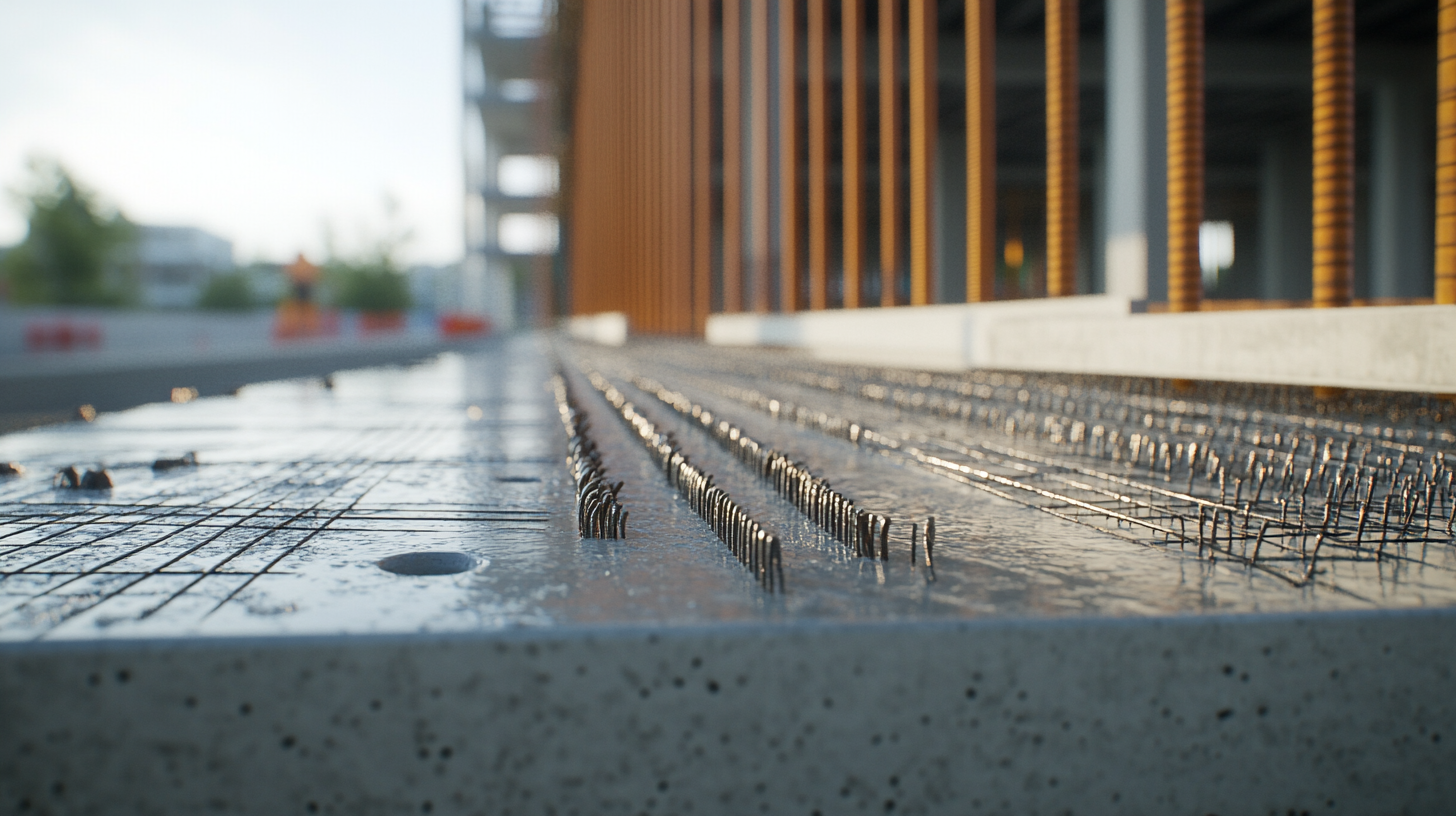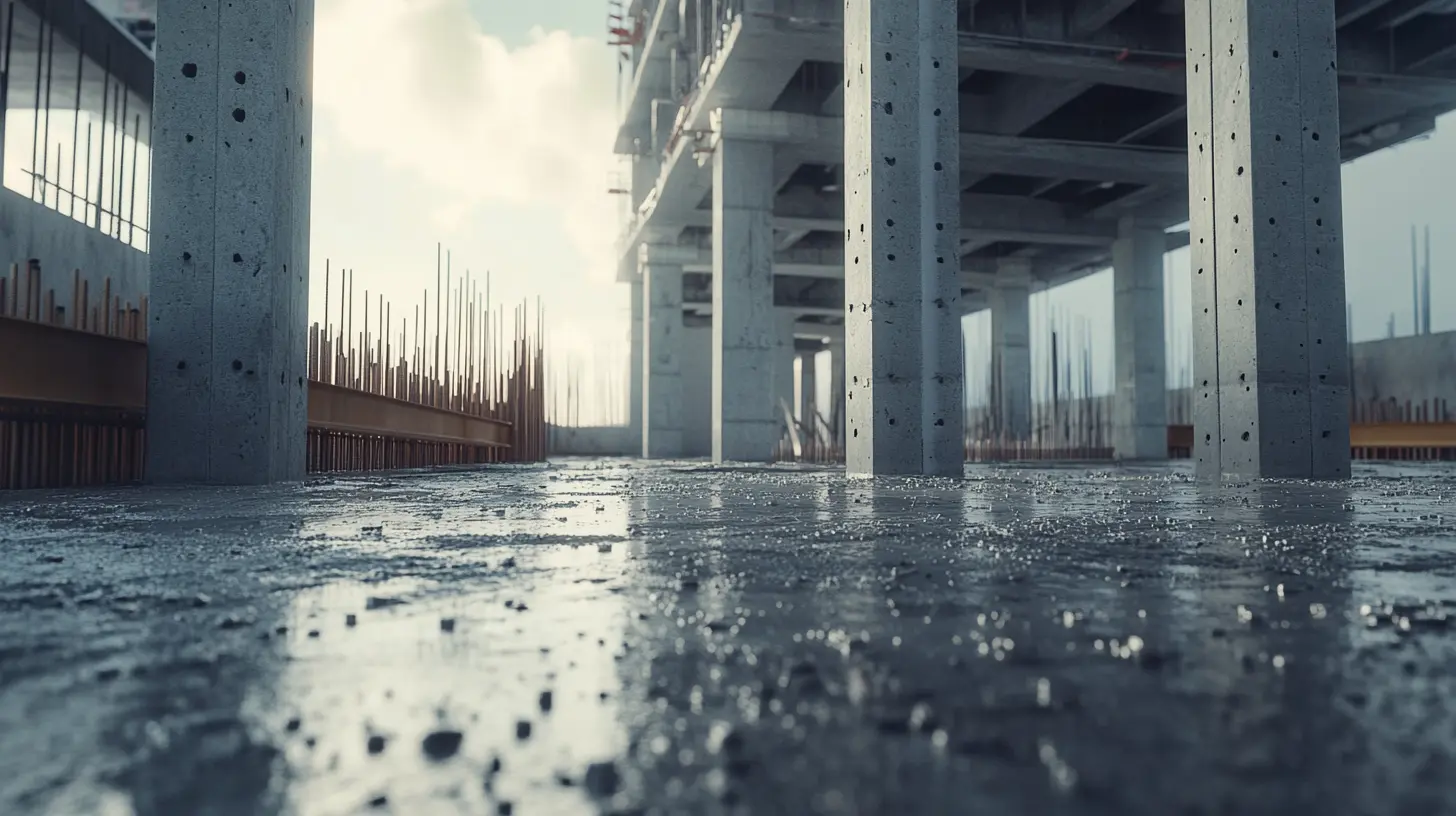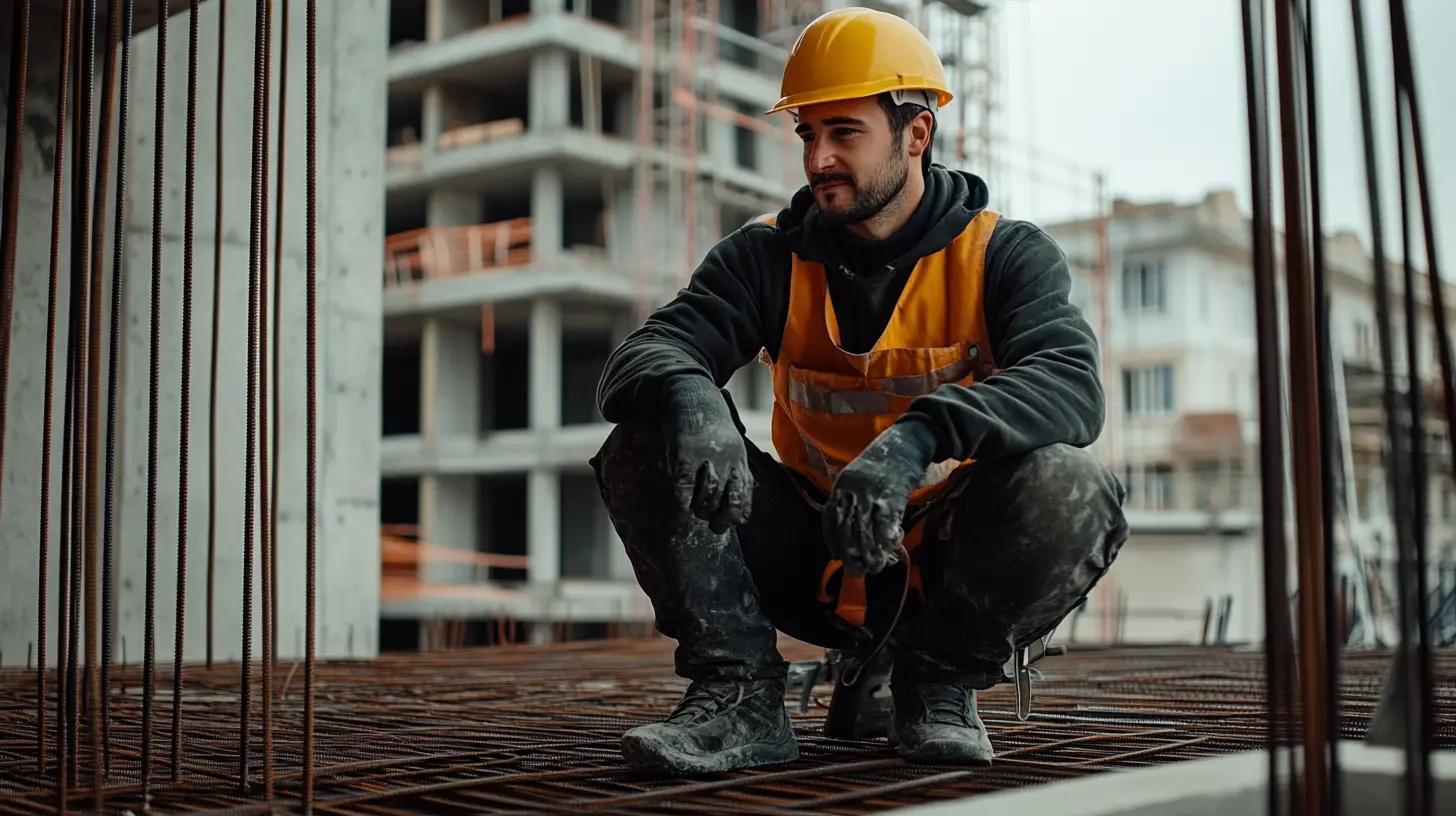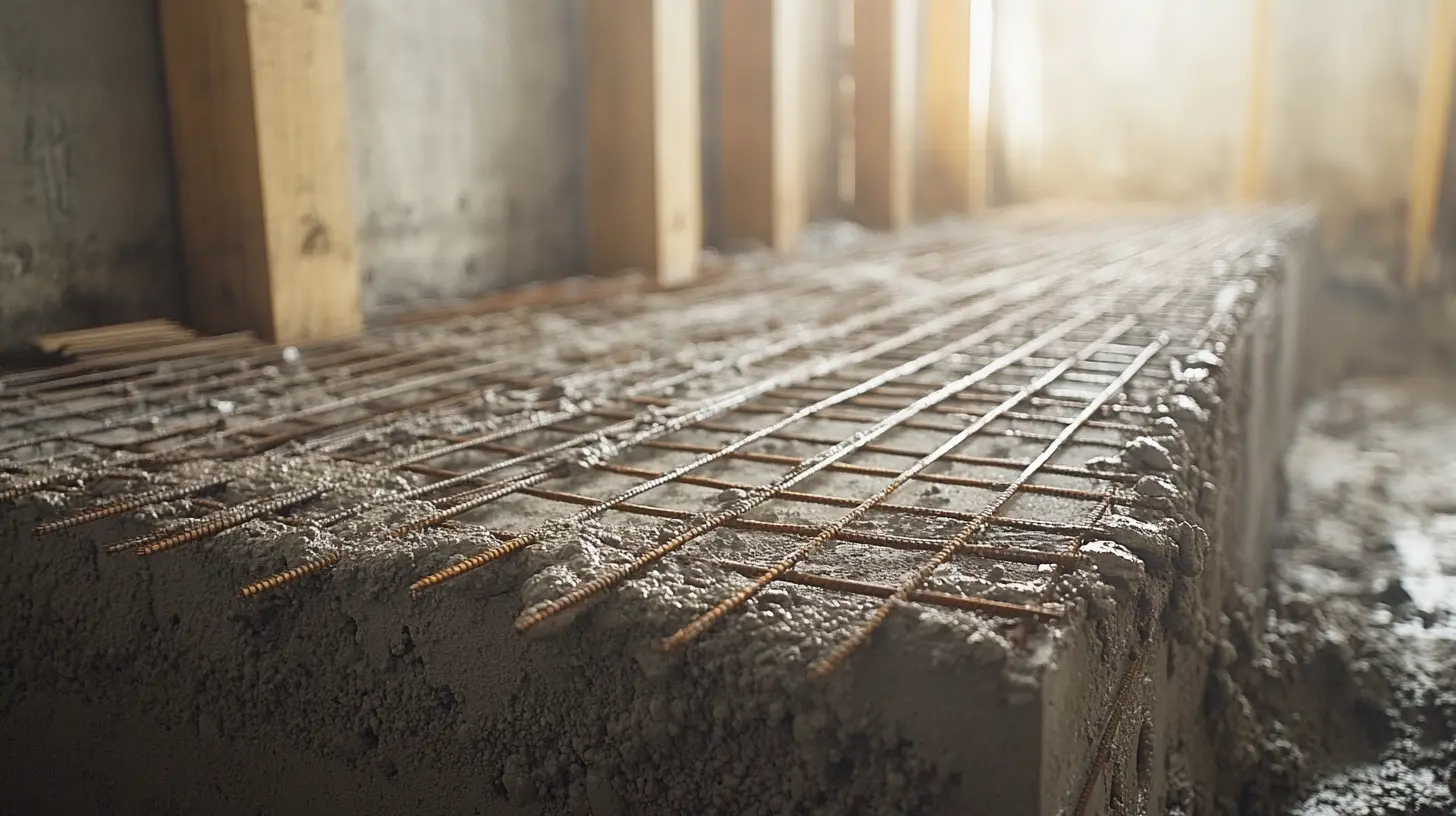In this ever-changing world of construction, with innovation, efficiency and productivity can be increased. A few of the great advancements that lie ahead, particularly in 2025, are magnetic concrete chamfer solutions. Such radical innovations do not just simplify the precast concrete production process but also go beyond the aspects of traditional methods of producing concrete products. Integration of magnetic fixing technology leads towards unprecedented precision and speed in construction, plus reduced labor costs and decrease in errors.
Xiamen Qianci Magnet Technology Co., Ltd. has been the pioneer in this revolution, having established itself as a leading provider of magnetic fixturing solutions for manufacturing precast concrete components. Shuttering Magnets, Formwork Magnets, Magnetic Concrete Chamfers – the exhaustive range of products offered by QCM Magnet is sure to bring about a radical change in methods of producing concrete components. Consequently, in this article, we take a closer look into the revolutionary applications of Magnetic Concrete Chamfers and explore ways in which they are set to reinvent construction making it more efficient and cost-effective in future years.

In the past few decades, concrete technology has really evolved from one end to the other, but ongoing innovations are still in line with reshapings at construction sites. As one looks forward to 2025, one of the most exciting innovations in the field is the new magnetic concrete chamfer solution. These very advanced applications of this kind lead not only to more efficient processes in construction but also open up possibilities for even more sustainable practices in construction. It is not surprising that magnetic concrete chamfers make it practically impossible for the forming concrete to be ever done at any time in the near future. The elimination of conventional forming materials opens the doors for streamlined construction progress. First and foremost, the magnetic chamfers would be easily adjustable and repositioned, offering greater flexibility in design and execution. This will make construction teams flexible for last-moment changes to the entire architecture without the usual down-time associated with conventional methods. Besides, this greening drive is intensifying more and more, and magnetic concrete chamfer technology is indeed going to be part of that initiative. It reduces waste and creates a circular economy in the building industry through such renewables and recyclables. As different advanced concrete technologies integrate into ordinary construction by 2025, they will also serve two-fold purposes: greater efficiency in building projects and greener standards in construction. Magnetic concrete chamfers indeed open up a great future for the industry, strengthening the future toward a smarter and more responsible construction industry.

Magnetic concrete chamfer solutions include revolutionizing the construction industry, and one of the main advantages lies in the fact that it contributes to enhanced efficiency and quality in project delivery. Such systems work with embedded magnets inside the chamfers to mount them onto forms when pouring concrete, thus doing away with the very bulky and space-consuming fastening systems that have often required additional labor time and complicate on-site integration.
One huge benefit of magnetic concrete chamfers is that they can manufacture clear and sharp edges without effort. This not only enhances the visual quality of finished structures but also minimizes extensive finishing activities, consequently saving time and resources. Besides, it opens up an unlimited number of creative designs, allowing architects to custom design their spaces without compromising structural integrity.
Most importantly, they are reusable and extremely durable. Magnetic chamfers can be used multiple times with little wear and tear, making them very appropriate for contractors from a cost perspective. With the current focus in the construction industry on going green, these innovative methods are nothing but a step forward to becoming completely waste-free by eliminating waste associated with one-time-use materials. Hence, they serve efficiency, precision, and sustainability, poised to feature in construction methodology revolutions in 2025 and beyond.

Indeed, any major changes anticipated to hit the construction industry will seek to penetrate the year 2025 and be led by radical innovations such as the magnetic concrete chamfer solution. It enhances efficiency, along with addressing key challenges such as safety and sustainability. In a MarketsandMarkets report, it was noted that the total construction market is expected to touch $10.3 trillion by 2025, necessitating cost-effective and innovative solutions in construction.
Heavy steel landscaping magnets are considered another way of moving toward smarter construction practices. The securing of forms with magnets virtually eliminates setup time and labor costs. A National Institute of Standards and Technology study states that construction projects applying new technologies see productivity improvements of 15-20% utilization. These gains are critical as the industry grapples with labor shortages and increasing project durations.
Broadly speaking, green building practices are fast becoming a vital constituent in construction innovations. Buildings contribute as such to 39% of global carbon emissions, thus enjoining the need for sustainable practice. By expediting construction processes, magnetic concrete chamfer solutions also speak to environmentally friendly initiatives that minimize waste and maximize resource use. With the continuing uptake of these innovations by the industry, a substantial mitigation of the carbon footprint from construction projects becomes achievable.

The construction industry is currently undergoing a revolution in innovative technology, of which magnetic chamfer solutions are the forerunners. Sustainability becomes the word of the day, and builders are looking for materials and processes that minimize waste and improve usability. Magnetic concrete chamfers address both ends of this spectrum by contributing to more efficient site operations and better resource management.
Whatever advantage this technology brings to the industry, it does one unchecked thing-Its reduce labor time and material costs. Conventional ways of handling joints and edges in concrete are burdensome setups, quite labor intensive, and take time. The flip side of it is magnetics which actually wouldn't take long to put in place; it's quick positioning with security, and this speeds up the entire process of installation. This reduction in on-site time allows projects to meet constrained deadlines while conserving materials within the same time frame.
The other great thing about magnetic chamfer systems is they can be reused. Traditional material gets tossed into the landfill after one use; magnetic chamfer materials can be cleaned, unlapped, and reused for different projects. This re-usability increases the life of construction materials and, more importantly, aligns itself with greater sustainability goals of lowering construction waste. The gradual transition of the industry toward lower carbon footprints and eco-friendliness would be made somehow smooth by magnetic chamfer technology in the future.
The recent years have witnessed the transformation of the construction industry into a highly technological and efficient standard with great focus on sustainable practices. A new development in this regard is the magnetic concrete chamfer, which has found favor in the industry for its ability to facilitate further enhancement of construction processes and structural features. As noted in the Construction Industry Institute report, the use of innovative materials like magnetic chamfers can see projects being reduced in construction time by at least 30%, thus achieving completion ahead of time.
Several case studies demonstrate the successful application of magnetic concrete chamfers in actual assignments. One such instance is a recent high-rise building project in Chicago, wherein magnetic chamfers were utilized with great effectiveness in achieving sharply aligned edges and surface finish. The American Society of Civil Engineers reported that the project was completed three weeks in advance while also reducing waste by 15%, hence fulfilling several environmental sustainability goals. Easier assembly and disassembly provided by magnetic solutions thus enabled the expedited handling of materials by site workers.
Additionally, a significant infrastructure project in Europe highlighted the long-term cost justification for the use of magnetic concrete chamfers. Incorporating this technology reportedly allowed contractors to achieve a 25 percent reduction in labor cost while ensuring much better safety standards due to the reduction in the number of accidents caused by traditional formwork methods. Magnetic chamfer systems added reliability and ease of use, marking a paradigm shift in construction practices, thus encouraging many others towards adopting such techniques for a sustainable future.
In what is fast becoming a modified view of construction, one such innovative solution, brand new magnetic concrete chamfer systems, seems to mark a watershed moment. But just as these technologies rise in importance, it becomes even more compelling to look into and identify what needs to be put in place as challenges for 2025 and beyond to tackle the widespread acceptance of these solutions. The recent report put out by McKinsey declares that the construction sector is lagging behind other industries in digitalization, with only about 15% of firms fully integrating new technologies into their workflow. This snail-like pace of serial nonacceptance of technologies like magnetic concrete chamfer, which promise efficiency and minimal waste, become just too high a hindrance.
One of the main hurdles is overcoming professional inertia. Notably, a survey conducted by Deloitte highlighted that 61% of construction firms state the lack of skilled workforce vis-ŕ-vis the adoption of innovative technologies as one of the challenges. Then there is the cost element associated with the shift. The initial costs in training and equipment upgrades may be considered too high to overcome by many firms, particularly where short-term profits are of critical concern.
Stakeholders must serve and establish a culture of innovation that urges the application of new methodologies. Partnerships between technology cats and construction companies would close the gap in this knowledge and help articulate better long-term value from the use of such innovations. Enabling such environments will help in addressing existing barriers and shell out the potential rewards of genuinely changing the process of construction in the foreseen future, thereby ushering in a very productive and sustainable industry by the year 2025.
Magnetic concrete chamfer solutions will drive significant innovations in construction by 2025. Industry leaders increasingly see these tool advancements as a potential to increase efficiency, reduce waste, and improve the overall success of a project. During a recent panel of top experts, participants immediately addressed the technologies not being just a fad but a necessity in modern construction.
Experts claim that thanks to the multifunctional nature of magnetic concrete chamfers, construction time is saved, fast assembly, and compact finishing work is achieved. By changing the conventions of material use, a reduction in cost and environmental impacts could be brought about. The design flexibility and cost advantages heralding a new paradigm in practice are predicted to the fore by experts and movers in the field, lessening the impact of traditional processes.
Equally important, the industry innovators note that collaboration and knowledge transfer would govern the success of these innovative ideas. For magnetic concrete chamfer solutions to thrive, the construction sector must re-invent itself with working partnerships that welcome experimentation and transfer of best practices. Working this way would ensure the maximum unlocking of these technologies' benefits into standard construction processes.
2025 promises to emerge as the landmark year for the fully automated and smart construction industry. Artificial Intelligence now seems to be heading beyond operational efficiencies and into revolutionary processes that impact the building. For example, project management used to be well-served by automated systems; real-time data analyses are possible now, resulting in better workflow and resource allocation, which allow construction teams to see beyond already-known branded difficulties and subsequently shift early enough on project dynamics without slipping into delays or incurring costs.
The new emerging technologies further address different development aspects in construction practices, as evidenced by examples such as using magnetic concrete chamfer solutions. Such innovations do not only optimize the construction process through considerations for accuracy but also contribute to a sustainable building environment. With this, one sees the possibilities in collaborative synergies between AI and smart materials producing smarter buildings bases of operation with inherent safety and efficiencies built into their design. Looking ahead, by 2025, it is quite clear that automation technologies and construction practices will together be a vital component for shaping the future of the industry more resilient and responsive to the needs of the modern society. The construction industry will turn the leaf for a new era of innovation and intelligent solutions.
The main challenges include resistance to change among industry professionals, a lack of skilled workforce, financial implications of transitioning to new methods, and concerns over short-term profitability.
According to a report by McKinsey, only about 15% of construction firms have fully integrated new technologies into their workflows.
Stakeholders can foster a culture of innovation by encouraging collaboration between technology developers and construction firms, which can help bridge the knowledge gap and promote understanding of the long-term benefits of innovations.
Automation is expected to enhance operational efficiencies, enable real-time data analyses for better resource allocation, streamline workflows, and minimize delays and costs through smarter project management systems.
AI enhances operational efficiencies and supports innovative processes that redefine building methods, allowing construction teams to better anticipate challenges and adapt to changing project dynamics.
The adoption of magnetic concrete chamfer solutions is highlighted as a smart technology that optimizes the construction process and contributes to sustainable building practices.
Integrating smart technologies enhances precision in construction processes, promotes sustainable practices, and creates smarter building environments that prioritize safety and efficiency.
Firms may be deterred due to the initial investment required for training personnel and upgrading equipment, which can be seen as a risk when focusing on short-term profitability.
By embracing automation and smart technologies, the construction industry can shape a future characterized by innovation, operational efficiency, and improved responsiveness to the needs of modern society.
Overcoming these barriers can lead to a revolution in construction processes, resulting in a more efficient and sustainable industry by 2025.

